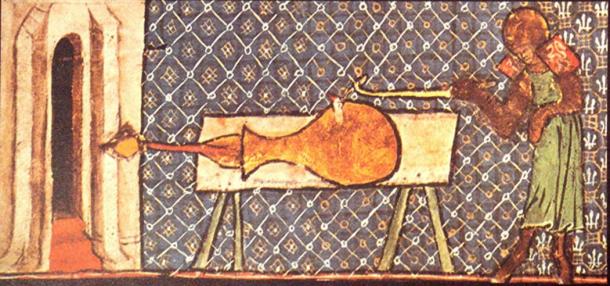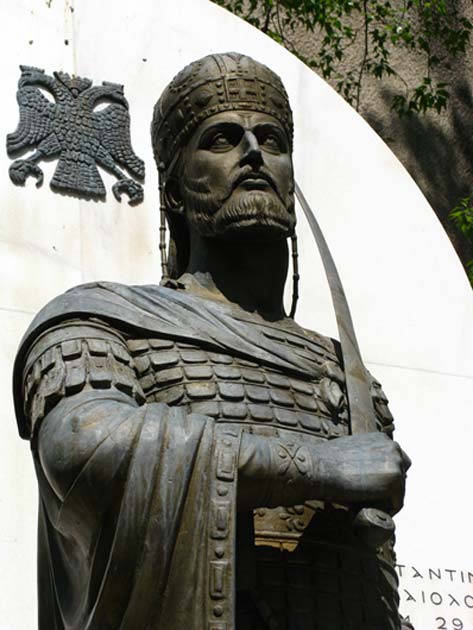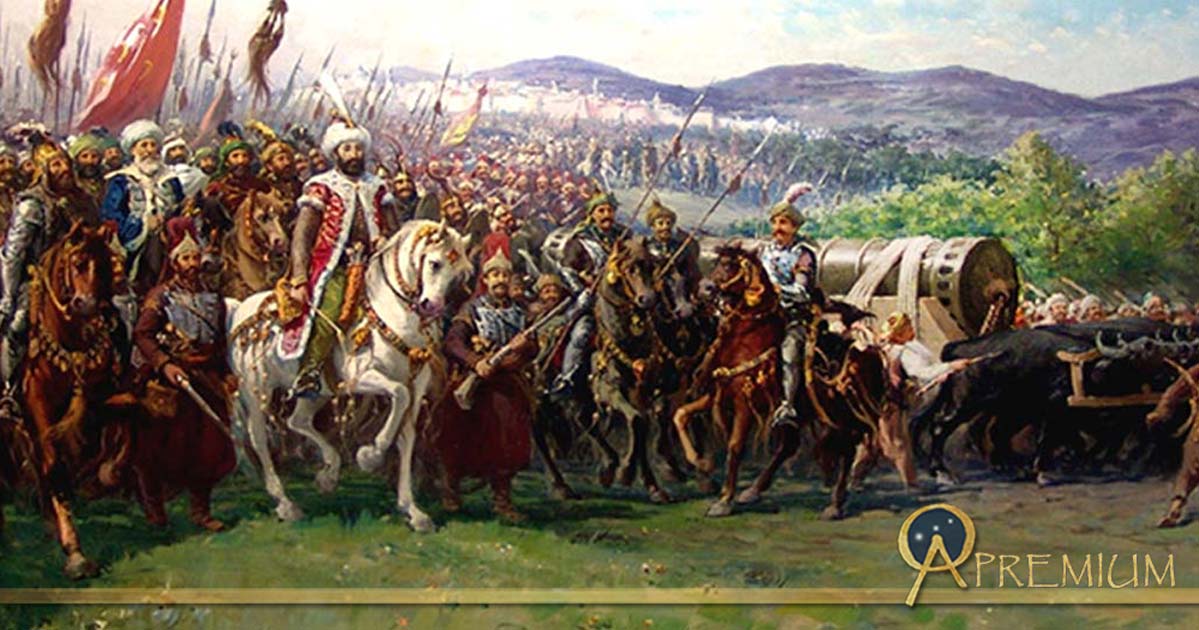Orban: The Man Whose Cannon Brought Down the Walls of Constantinople – Part I
For 53 days, starting on Friday, 6 April, the forces of the Ottoman Empire shook what was left of the Eastern Roman Empire (known as Byzantium, or the Byzantine Empire) until they were able to breach the massive walls of Constantinople on Tuesday 29 May 1453, conquering the last standing remnants of the once mighty Roman Empire. The conquest of Constantinople could have been drastically different were it not for a man by the name of Orban and his massive cannon.

The Dardanelles Gun, cast in 1464 and based on the Orban bombard that was used for the Ottoman besiegers of Constantinople in 1453 (Public Domain)
Who Was Orban?
Orban, (also known as Urban) was a cannon caster of possible Hungarian origin (but this is disputed). A Byzantine Greek historian from Athens by the name of Laonikos Khalkokondyles (c.1430 – c. 1470) mentions something different:
There was an artilleryman of the king [sultan] called Orbanos. He was a Dacian by birth and earlier he had spent time with the Greeks. Because he needed a better salary for himself, he left the Greeks and came to the Porte of the king [sultan].
Khalkokondyles mentions that Orban was not Hungarian but “Dacian.” To clarify, the term Dacian he used shows his love of antiquity while the term would not have been familiar to the uneducated. Most people during that time would have no idea what or where Dacia was. The name Dacia comes from ancient Rome and within its territory were the states of Wallachia and Transylvania. It is possible that Orban was Hungarian and made his way south seeking those who could use his services. Some have even suggested the Orban may have been German. But the biggest giveaway to show that Orban was indeed an Eastern European from either Hungary, Wallachia, or Transylvania, was his method of casting cannons.

Earliest picture of a European cannon, Walter de Milemete, 1326 (Public Domain)
Orban was promoting his services in the casting of bronze bombards. The bronze casting of cannons or bombards had been abandoned in Western Europe by the 1440’s. The reason for this was that western cannon casters found that the manufacturing of smaller pieces made from iron were easier to deal with. Therefore, Orban’s methods in casting cannon shows that his origins were probably Eastern European.

Pumhart von Steyr, a medieval supergun, Austria. (Public Domain)
Looking for a Deal
Orban visited the court of Byzantine Emperor Constantine XI Palaiologos (8 February 1405 – 29 May 1453), soon to be the last Byzantine emperor, to pitch his cannons.

Constantine XI Palaiologos (Tilemahos Efthimiadis /CC BY 2.0)
Orban entered the capital of Constantinople and offered his services to the emperor. The emperor was delighted in meeting with him, for he had an interest in using this new technology to his advantage after seeing it first-hand at the Hexamilion, which is a defensive wall constructed across the Isthmus of Corinth and seeing the power this new device of war, as it smashed through rock.

Excavation of the Hexamilion wall (CC BY-SA 3.0)
However, Constantine had not the resources such as timber for the foundry fires or even the money to offer Orban to build the desired weapons. Constantine also did not want the man to leave his capital and sought to keep him as long as he could. In order to do this, he provided a stipend from scraps to keep the man. This only lasted for so long and after the money ran dry, Orban left the city seeking a new customer. He made his way to the court of Ottoman Sultan Mehmed II (30 March 1432 – 3 May 1481), best known as Mehmed the Conqueror, (the very man who would soon lay waste to Constantinople).

Mehmed II in Edirne (Public Domain)
Once Orban arrived, he requested an audience with Mehmed to sell him his services. After Mehmed was informed of Orban's engineering skills, he was happy to welcome this traveler and to show him that his skills would be appreciated, and showered him with gifts. Mehmed asked Orban if were possible to build a powerful enough cannon that could breach the walls of Constantinople. Orban said, “I can cast a cannon of bronze with the capacity of the stone you want. I have examined the walls of the city in great detail. I can shatter to dust not only these walls with the stones from my gun, but the very walls of Babylon itself.”
This FREE PREVIEW is just a taste of the great benefits you can find at Ancient Origins Premium.
Join us there ( with easy, instant access ) and reap the rewards: NO MORE ADS, NO POPUPS, GET FREE eBOOKS, JOIN WEBINARS, EXPEDITIONS, WIN GIFT GIVEAWAYS & more!
- The Legacy of Armenia: Trade, Metallurgy, and Forging of Precious Metals of the Ancient World
- Hurrem Sultan, the Cheerful Rose of Suleiman I and a Powerful Woman of the Ottoman Empire
- Was the Emperor Constantine a True Christian or Was He a Secret Pagan?
Cam Rea is an author and military historian. He has written numerous articles for Ancient Origins, Classical Wisdom Weekly, and has authored several books, including: Leviathan vs. Behemoth: The Roman-Parthian Wars 66 BC-217 AD
--
Top Image: Modern painting of Mehmed and the Ottoman Army approaching Constantinople with a giant bombard, by Fausto Zonaro (Public Domain)
By Cam Rea




















